Ryan Hall's Blog, page 280
March 10, 2016
Making U.S. Team a Top Priority For Lopez Lomong
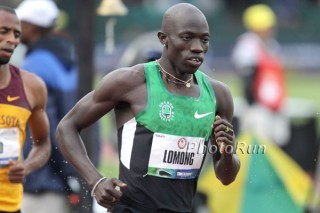
Lomong is hoping to make his third Olympic team this summer. Photo: PhotoRun.net
For two-time Olympian Lopez Lomong and his Bowerman Track Club teammates, it’s highly convenient that the U.S. and world indoor championships will be held on consecutive weekends in their training base of Portland, Oregon. But Lomong would be aiming for a top finish in the 3,000 meters at U.S. championship on Friday, and the subsequent spot on the world indoor team, regardless of the meets’ locations.
“The opportunity to race against the world best is never one to be missed,” he says. “In 2012 I competed in indoor worlds in Istanbul, and it gave me a chance to test out tactics against the world’s most elite runners. I learned a lot about what it would take to be on the Olympic stage and chase after a medal. You can never be fully prepared for the feeling of stepping into the Olympic stadium, but world indoor still gives a good taste and is like an Olympic testing bed. Everyone’s strengths and weaknesses are really magnified on that little indoor track!”
As a former Lost Boy from Sudan who was the American team’s flag bearer at the 2008 Olympics, Lomong has another motivation to wear the U.S. uniform—to be a counterargument to the harsh language on immigration that’s marked much of the U.S. presidential campaign.
“I think the discussion around immigration is one that will define the U.S. for many years to come,” he says. “Running has allowed me the platform to speak about the conflicts in South Sudan, the need to use athletics and sport in general to achieve greater goals, and this year about the importance of embracing immigrants.
“I will certainly be proudly representing the U.S. again this year and forever thankful to the people who opened their arms to me to give me a second chance. I pray that we as a country continue to believe in the American dream that is built upon our great diversity.”
Lomong qualified for indoor nationals with an indoor 3,000-meter PR of 7:43.01 at the Millrose Games on February 20. After years of battling muscle and nerve issues, he says a new focus on recovery has him feeling strong and agile. “The key for me is health so that when I line up I can pour everything into the race without any concern about pain,” he says.
Perhaps fitting for someone with such a broad international outlook, Lomong did much of his base training for this season on the other side of the world. His wife, Brittany Morreale, a first lieutenant in the U.S. Air Force, is currently stationed in Adelaide, Australia. Lopez joined her there for three months, training with a local group known as Team Tempo. He’s already pining to return.
“I am really encouraging [BTC coach] Jerry [Schumacher] to bring more of the team down next year so we can escape the cold, rainy Portland winter and train on the amazing park lands in the perfect Adelaide weather,” Lomong says.
After, of course, he makes one or more U.S. teams in this Olympic year.
RELATED: Excerpt from “Running For My Life”
The post Making U.S. Team a Top Priority For Lopez Lomong appeared first on Competitor.com.
Out There: The Upside of Unplugging

Columnist Susan Lacke wonders if fitness technology hurts more than it helps.
There’s a feature on my GPS watch that allows me to “compete” with a virtual training partner during my runs. With a push of a button, I can create a pace bunny to taunt—I mean, motivate—me over the miles. When I drop off the designated minutes per mile, my watch buzzes and chirps until I get back on pace. If I continue to lag, a little stick figure appears on the screen, running in circles and laughing with a French accent, à la Monty Python. Okay, fine—it doesn’t actually laugh, but I’m certain that’s a feature that will be added in the next software upgrade.
I named my partner “Chase,” but I’ve since learned he also responds to “Asshole”—as in “That asshole needs to stop mocking me, or I’m going to throw this watch into the ravine.” (Lest you think I am particularly hard on Chase: I have made the same threat to training partners in the flesh.)
I also have an app on my phone that tracks my daily activity. I installed this after the realization that—thanks to my work-from-home job as a writer—I spend a lot of time on my rear end in front of a computer. With this app, I’m alerted whenever I’ve been stationary for more than an hour, and the notification won’t shut off until I’ve moved around for a minimum of five minutes. This is why, if you live in my neighborhood, you’ve probably seen me pacing the street in my bathrobe and snow boots, cursing at a phone screen.
No wonder I get so excited for bedtime, when I can hide my electronics, turn off the lights, and crawl into my sleep-tracking device. I installed a mattress sensor—which tracks movement, heart rate, and respiration during slumber—a few months ago while researching for an article on sleep quality. Feeling confident in my snoozing skills, I was shocked when my sleep tracker gave me a score of 65 out of a possible 100 on the first night.
“This is bull,” I yelled at the screen in the morning. “I am a master sleeper! I’ll show you!”
I’ve spent every night since trying to achieve a high score of 100. The best I’ve gotten so far is an 80. I’ve become so obsessed with getting a perfect score in sleeping, it keeps me up at night (literally – in bed, I’ve been reading medical research about sleep in hopes of cracking the code to a 100-pointer).
So, to recap: I am racing a stick figure in my watch, I have a cattle prod in my smartphone, and my sleep tracker is making me lose sleep.
Technology is supposed to make our lives better, right?
In our increasingly digital world, we’ve become obsessed with tech. A study by International Data Corp predicts more than one third of adults in the United States will utilize some form of wearable health tracker by the year 2019, be it a fitness tracking watch or smartphone app. With these devices, we can receive real-time data on everything from heart rate to steps taken to calories burned. We can plot training mileage on a graph, tally biofeedback in a spreadsheet, and gamify everyday activities like walking and sleeping.
But is more data always better? Are we actually healthier because of this additional monitoring? Is it wise to be plugged in all the time?
I’m not so sure.
Maybe all this technology is hurting us more than helping. Last week, I saw a fellow runner trip over a curb because her attention was focused on adjusting the smartphone in her armband. Shortly before that, a friend of mine shared she was rehabbing a running injury because she paid more attention to the pace on her watch instead of what her body was telling her (which was “You’re an idiot if you think you’re actually going to hold this pace.”) Meaningless phone alerts frequently interrupt meaningful work, conversations, and lives. And my husband would really like me to turn off the lamp and stop reading sleep studies in bed.
Perhaps it’s time to unplug. Most of us would say our lives are stressful enough—do we really need technology to identify even more items for the laundry list of things we could be doing better?
This month, I’ve committed to cutting the cords and reconnecting with life as it is—not what a computer chip says it should be.
Instead of racing Chase, I head out the door wearing a cheap plastic doodad that only features the time of day and a stopwatch function. I’m not sure what my average pace has been, or how many miles I’ve run each day. I couldn’t tell you what my heart rate is or how many calories I’ve burned. I don’t have a picture from my smartphone to document each run. But I do know this: The canyon routes I run are stunningly beautiful. I had never truly been paying enough attention to notice that before.
And if I squint my eyes and turn my head, I think I might even see Chase at the bottom of the ravine.
* * *
About The Author:
Susan Lacke does 5Ks, Ironman Triathlons and everything in between to justify her love for cupcakes (yes, she eats that many). Susan lives and trains in Salt Lake City, Utah with three animals: A labrador, a cattle dog, and a freakishly tall triathlete husband. She claims to be of sound mind, though this has yet to be substantiated by a medical expert. Follow her on Twitter: @SusanLacke.
The post Out There: The Upside of Unplugging appeared first on Competitor.com.
March 9, 2016
Workout Of The Week: The Mountain Run
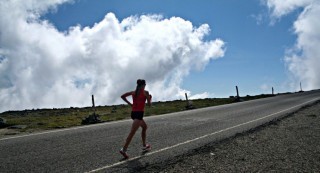
Running up and over a mountain can strengthen both your legs and your mind. Photo: Dan Photo: Dan Szczesny, www.ekpadventures.com
When I met Haile Gebrselassie in March 2009, I asked him to name his favorite workout.
“Hill training is my favorite,” he said. “Because that’s the one that gives you a lot of problems. Pain. Breathing too much. Struggling too much. Of course you don’t enjoy it during training, but after training, after you reach the top and you look down, and say, ‘That is what I did,’ it gives you confidence.”
I later learned that the specific workout Geb was referring to consisted of 90 minutes straight up and back down Entoto Mountain near his home in Addis Ababa. He is not the only runner who does this workout. It is a staple in the training of Ethiopian runners, and all of the top Kenyan runners do a similar version in the mountains surrounding the Rift Valley.
RELATED: Hit The Hills, Reap The Benefits
The East Africans did not fall into the habit of running to the tops of mountains and back down because their understanding of exercise science suggested that it would stimulate the right set of physiological adaptations to maximize their race performance. They did it for the same reason Sir Edmund Hillary famously gave for summiting Everest: because it was there. Mountain peaks exert a magnetic pull on athletes. It is impossible to imagine a culture of runners existing in a mountainous environment and not making mountain runs a staple of their training. No physiological rationale is needed. Running up and down the mountain just feels like a natural thing to do if you’re a serious runner who’s trying to improve and there’s a mountain nearby.
It’s interesting that the two reasons Haile Gebrselassie gave me for favoring his mountain run above all others are both psychological. The first is that the workout is hard. The pain and suffering of climbing the mountain prepare him for the pain and suffering of racing. The second is that the workout builds confidence. It is not possible to build confidence as a runner without also improving your performance capacity. So it’s sensible to do whatever gives you the most confidence in training, trusting that performance will follow. That’s what Haile does.
Of course, running up and down a mountain does in fact stimulate certain beneficial physiological adaptations. It’s really two workouts in one. The first half, going up, develops leg strength and generally trains the aerobic system at a higher intensity than a flat run of equal duration does. We automatically work a little harder, minute for minute, when we go against gravity. The second half of the workout, going down, subjects the lower extremities to repeated high impact forces, and thereby increases their capacity to withstand such forces. For the marathoner this translates as less chance of bonking in the late miles due to accumulated muscle damage or loss of elasticity in the legs.
RELATED: The Benefits Of Downhill Training
East African runners typically do mountain runs once a week or so during periods of focused preparation for races. The idea is to run hard on the way up and take it relatively easy on the way down—you’ll get the durability benefits of going down the mountain regardless of your pace. When you do your mountain runs, note your time for the ascent and try to improve it as you progress toward race day. You don’t have to better your mark every time, and you should not go out of your way to do so on days when you don’t feel strong. But when you feel good, go for it. That’s how you maximize the confidence boost of the workout.
The details of the workout depend entirely on the topography of the mountains and hills in your area. Work with what you have. If the only “mountain” near you is a glorified hummock, you may need to go up and down it a few times to get the workout you need. If you live at the base of Mt. McKinley, you’ll probably want to stop short of the summit. The point is to give your body a challenge that’s about equivalent to your toughest long runs.
Unless you race on mountains, you’ll probably want to phase out your mountain runs a few weeks before your biggest race and replace them with long runs on terrain that is more race-specific. But you’ll get more out of those peak long runs by having preceded them with a bunch of long runs thanks to their… “Pain. Breathing too much. Struggling too much.”
Enjoy!
****
About The Author:
Matt Fitzgerald is the author of numerous books, including Iron War: Dave Scott, Mark Allen & The Greatest Race Ever Run (VeloPress, 2011). He is also a Training Intelligence Specialist for PEAR Sports. To learn more about Matt visit www.mattfitzgerald.org.
The post Workout Of The Week: The Mountain Run appeared first on Competitor.com.
Video: Shelter Dog Saves Man’s Life and Inspires Him to Run
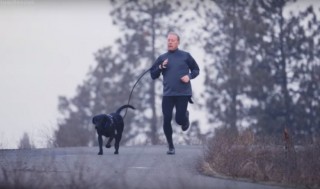
The Humane Society has been requesting video submissions on stories about shelter animals and their owners changing each others’ lives. The story of Eric and Peety is the first of entries to launch the Mutual Rescue project.
In 2010, Eric weighed 340 pounds, had type 2 diabetes and high blood pressure. His doctor told him he’d be dead in five years if he didn’t change his sedentary lifestyle. At the suggestion of his nutritionist, Eric adopted Peety, a middle-aged, obese dog, from the Humane Society in Silicon Valley, Calif., and together they lost 165-plus pounds (Eric lost 140-plus pounds and is no longer a diabetic, and Peety lost 25 pounds from their daily walks). Eric also completed his first marathon in 2015.
RELATED: A Guide to Running With Your Dog
The post Video: Shelter Dog Saves Man’s Life and Inspires Him to Run appeared first on Competitor.com.
Tech Trends: Keeping Up With The Runkeeper App
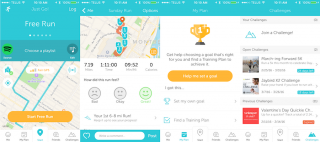
In a previous edition of Tech Trends, we introduced three of our favorite iPhone GPS running apps . We’ve gone into more depth about what makes each of them worth considering on your next run. For our final installment in the series, we take a look at Runkeeper.
Released in 2008, Runkeeper was one of the first apps to appear in the iTunes store. As smartphones have become more competent fitness devices, the app has kept pace with timely updates and improvements. Runkeeper was recently bought by running apparel manufacturer, ASICS.
Options Aplenty
Viewing the Runkeeper app for the first time can be a bit overwhelming. Instead of hiding buttons and features in menus, Runkeeper presents a large number of options on the home screen. With the current version, there are 13 buttons and five slider options to navigate. On the bright side, the trade off for Runkeeper’s cluttered home screen is quick access to a host of useful features.
Runkeeper performs the basic tasks of a GPS running app well. Recording a run is simple and the app logs the run data in an easy-to-read, organized entry. Unlike other apps, Runkeeper isn’t only for running. The app can also keep track of other activities, including cycling, cross country skiing and more. For those wanting an app that goes beyond running, this is a welcome addition.
Another strength of Runkeeper is the ease of creating fitness and health goals. While other apps provide basic training plans, “Goal Coach” provides a simple, more personalized approach. The app determines your current level of fitness based on user responses to a series of questions. Whether the objective is to finish a half marathon or lose a few pounds, Runkeeper has the ability to create a realistic path for different types of goals.
Paint A Picture of Your Overall Health
While bouts of exercise are vital to your well-being, other daily habits and activities also play an important role in your overall health. Runkeeper brings exercise and daily activity data together by acting as a central hub. The data collected by Runkeeper’s large list of health and fitness partners is viewable from within the app. For example, Withings and Jawbone fitness trackers can send daily step counts to Runkeeper. Sharing sleep, nutrition, weight, and your GPS watch’s activity data can help paint a more complete picture of your health.
Is premium worth it?
The majority of Runkeeper’s features are available in the free version of the app. For those who want more, Runkeeper Go is available for $40/year or $10/month. The most notable additional feature with Runkeeper Go is Live Tracking. When this feature is enabled, family and friends can track you in real-time during your next marathon or during your weekend long run. Your location will be broadcast to their mobile device so they can be aware of your exact location.
Runkeeper Go members also receive detailed reporting features and a few more training plan options. Unless live tracking or advanced reports are a must, you’re not missing that much by sticking with the free version.
RELATED: An Introduction To Strava
The post Tech Trends: Keeping Up With The Runkeeper App appeared first on Competitor.com.
Photos: 2016 Way Too Cool 50K
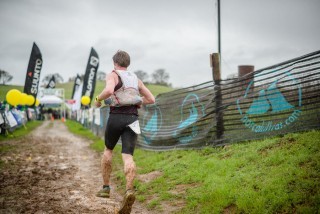
Photo Gallery
1 of {count}
Back to Start

2016 Way Too Cool 50K
David Roche led from start to finish, winning in 3:19:43—the eighth fastest time recorded in the event's history. Photo: Myles Smythe | Michigan Bluff Photography

2016 Way Too Cool 50K
Dylan Bowman, who was second at last year's North Face Endurance Challenge Championship, dropped down in distance to finish third in 3:23:23. Photo: Myles Smythe | Michigan Bluff Photography

2016 Way Too Cool 50K
Irishman Paddy O'Leary of San Francisco is making a name for himself on the ultrarunning scene. He finished fourth in 3:27:31. Photo: Myles Smythe | Michigan Bluff Photography

2016 Way Too Cool 50K
Fernando De Samaniego Steta of San Francisco finished 12th in 3:41:45. Photo: Myles Smythe | Michigan Bluff Photography
View Larger Image

2016 Way Too Cool 50K
Jonas Oppedal leads Mikhail Shemyakin and Josh Lerner through Knickerbocker Creek 7.5 miles into the race. Photo: Mario Fraioli
View Larger Image

2016 Way Too Cool 50K
Anna Mae Flynn of Tahoma, Calif., finished third, sneaking under 4 hours with a 3:59:44 finish time. Photo: Mario Fraioli

2016 Way Too Cool 50K
YiOu Wang ran strong all day, finishing second in 3:43:12—an 8-minute improvement on her finishing time from the year before. Photo: Myles Smythe | Michigan Bluff Photography

2016 Way Too Cool 50K
Daniel Metzger, 21, runs past a few fun signs and enthusiastic spectators with about half a mile to go in the race. Photo: Myles Smythe | Michigan Bluff Photography
View Larger Image

2016 Way Too Cool 50K
Lindsay Tollefson crossing Knickerbocker Creek at 7.5 miles. She finished fourth in 4:03:19. Photo: Mario Fraioli

2016 Way Too Cool 50K
Chris Castleman of San Francisco rounds the final turn en route to a 19th place finish. Photo: Myles Smythe | Michigan Bluff Photography

2016 Way Too Cool 50K
Alex Varner, who was running his first race in several months following an injury, finished fifth in 3:29:09. Photo: Myles Smythe | Michigan Bluff Photography

2016 Way Too Cool 50K
Jorge Maravilla of Mill Valley, Calif., closed well in the race's latter miles, finishing second in 3:22:00. Photo: Myles Smythe | Michigan Bluff Photography

2016 Way Too Cool 50K
A runner makes his way through the mud with a quarter mile to go in the race. Photo: Myles Smythe | Michigan Bluff Photography
View Larger Image

2016 Way Too Cool 50K
Megan Roche repeated as women's champion, running 3:42:24 to win by 48 seconds. Photo: Mario Fraioli

2016 Way Too Cool 50K
A runner approached the muddy finishing stretch outside Cool Fire Station. Photo: Myles Smythe | Michigan Bluff Photography

2016 Way Too Cool 50K
Women's runner-up YiOu Wang answers questions from the race announcer moments after crossing the finish line. Photo: Myles Smythe | Michigan Bluff Photography
Related Galleries
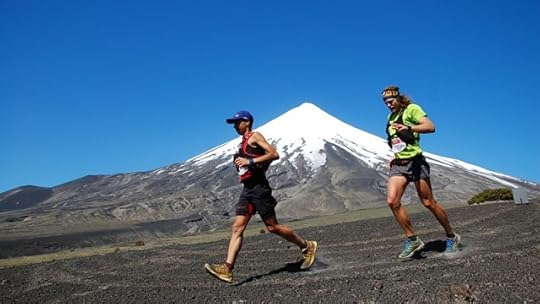
Photos: A Glimpse Inside The Volcano Ultra Trail Races in Chilean Patagonia

Photos: 2015 Brazos Bend 100
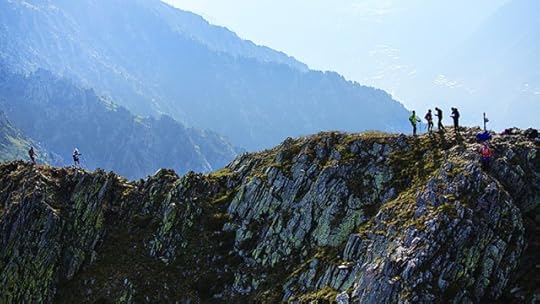
Photos: Andorra’s Ultra Trail Vallnord

Photos: The 2015 North Face Endurance Challenge Championships

More Galleries
The post Photos: 2016 Way Too Cool 50K appeared first on Competitor.com.
March 8, 2016
Boston Marathon Telecast Moving to NBCSN

With the end of Universal Sports Television last fall, many endurance sports events needed a new broadcast home—including the Boston Marathon.
NBC, a minority stakeholder in Universal Sports, picked up the broadcast rights to the Boston Marathon, and the network confirmed that the 2016 Boston Marathon will be televised live on cable channel NBCSN on April 18. The broadcast will start at 8:30 a.m. ET.
In addition, the Boston Marathon broadcast will be livestreamed on the NBC Sports Live Extra app, which can be downloaded for free to your smartphone or tablet, or found on platforms like Apple TV and Amazon Fire TV.
The move from Universal Sports to NBCSN instantly scales the number of households the Boston Marathon can be seen in. Estimates indicate that NBCSN is in more than 80 million homes in the U.S., while Sports Business Daily estimated that Universal Sports was in about 6 million households.
More details on the telecast are expected to be announced at a later date.
The post Boston Marathon Telecast Moving to NBCSN appeared first on Competitor.com.
Evan Jager’s Road To Rio Will Go Through Portland This Weekend
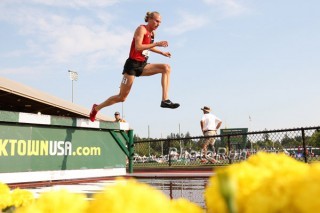
Reigning U.S. steeplechase champion Evan Jager has two goals this summer: make the Olympic team and win a medal in Rio.
As is fitting for a specialist in a race involving 28 hurdles and seven water jumps, Evan Jager likes to look ahead, not back.
At the Paris Diamond League meet last July 4, the 27-year-old Jager was meters away from winning the steeplechase in a sub-8:00 time. He tripped over the last barrier, but recovered almost immediately and finished second in an American record of 8:00.45. When asked whether he’s still haunted by the incident, Jager jokingly says, “Not really. The only time I really think about it is when other people bring it up or ask questions about it.”
Instead, Jager’s thoughts are totally oriented toward the summer of 2016.
“I only have two goals for this year,” he says. “Make the Olympic team in the steeple and medal at the Olympics if I am able to make the team.”
For Jager, this weekend’s U.S. Indoor Championships are a means to those big-picture ends.
“My focus going into U.S. Indoors is to work on my racing tactics and trying to win a championship-style race,” he says. “If I happen to make the world team I will be very happy and do my best to try to medal.”
That both meets will be held in his training base of Portland, Ore., simplified the decision to run a brief indoor campaign. To get his qualifier for the meets, Jager placed fourth in the 3,000 at the Millrose Games on February 20. His time of 7:40.10 was just off his indoor PR for the distance.
“I would guess I’m in close to the same shape as [this time] last year, possibly just a little bit fitter,” Jager says. “We have trained just a little bit harder this winter compared to last year, and that is mainly because most of our team wanted to try to qualify for the World Indoor Championships here in Portland.”
That high level of fitness will be crucial to Evan’s goal of medaling in the Olympics. At last summer’s world championships, he led with one lap to go, perfectly positioned in the outer part of the first lane. But over the last 250 meters, he was unable to match the closing sprint of eventual winner Ezekiel Kemboi and the three other Kenyans in the race, and finished sixth.
After the final, Jager told Runner’s World, “They just have that quick step and can put five meters on you in no time, so it’s really hard to play their game. I’ve got to figure out how to do it my way. I don’t think I can do it their way and beat them.”
Months later, Jager says he meant both fitness and racing tactics when discussing how to get on the podium in a global championship. “I believe I have to be able to use race tactics that benefit my strengths, and in order to do that I need to be the fittest I have ever been so that I can follow through with those tactics,” he says.
So while Jager is looking forward to competing indoors in Portland this weekend, he has the much bigger events of the summer fully in sight.
“The biggest change I have made for this year has been my goals and my mentality,” he says. “The only thing that I care about and the only thing that I am thinking about this year is making that Olympic team and trying to medal at the Olympics if I make that team.”
The post Evan Jager’s Road To Rio Will Go Through Portland This Weekend appeared first on Competitor.com.
NYC Marathon Drawing Accepts More Runners in 2016

Photo: Brian Metzler
A higher percentage of runners attempting to enter the New York City Marathon this year are going to get good news.
The New York Road Runners said that 19,083 runners will be accepted through today’s non-guaranteed drawing—an increase of 4,757 from a year ago. In all, 23 percent of non-guaranteed applicants will be accepted. There were 82,172 non-guaranteed applicants in all.
The drawing takes place today and those selected will be notified via email.
The NYRR says the increase in non-guaranteed drawing entries is the result of a smaller number of guaranteed entry applications received, as well as the end of the marathon resolution entry process for the 2012 race which was canceled due to Hurricane Sandy.
About 50,000 runners are expected to participate in the 2016 New York City Marathon, which takes place on Nov. 6.
RELATED: 45 Reasons Why We Love the New York City Marathon
The post NYC Marathon Drawing Accepts More Runners in 2016 appeared first on Competitor.com.
Shoe Of The Week: 361° USA Chaser
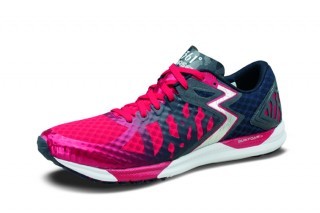
361˚ USA's Chaser is a light, low-to-the-ground and technically advanced racing flat.
Although 361˚ USA is a new brand to the American running scene, you’ll be hearing a lot more about this company this year. A subsidiary of the second-largest footwear brand in China, 361˚ USA put down roots for the brand in the U.S. last year with help from several U.S. footwear veterans. The parent company is an official sponsor of this summer’s Olympics in Rio de Janeiro—the first Asian company to sponsor the Olympics—and will supply gear for the Olympic Torch relay, volunteers and technical staff.
The U.S. subsidiary designs and manufacturers shoes specifically for the American market. The new Chaser is a neutral, low-profile, lightweight trainer/racer that, depending on your running form and preferences for more or less shoe, makes a great 10K or half marathon race shoe. It is certainly well suited for speed training and provided enough underfoot that it served testers well for fast runs but wasn’t built up enough to obscure underfoot feel for tight cornering.
The breathable mesh upper is quite open and features a gasket-like, super thin tongue and overlays of TPU film. The fit is snug and secure enough to hold the foot firmly and it may be too tight a fit to accommodate higher-volume feet. The forefoot is highly flexible and makes for great toe-off, as encouraged by the action of the carbon fiber shank in the midfoot and rearfoot; a combination for quick transition for a snappy gait cycle. The cushioning is ample, especially for such a minimal platform, courtesy of 361’s injected foam construction that seals in a absorption and rebound, all-in-one. Besides having a great name, the Chaser runs rather quietly as the result of muting blown rubber that softens the blow while carbon rubber pods in the heel enhance durability.
Price: $100
Weights: 7.8 oz. (men’s size 9.0); 6.2 oz. (women’s size 7.0)
Heel-Toe Offset: 9mm; 18mm (heel); 9mm (forefoot)
Info: 361USA.com
RELATED: Shoe of the Week—Mizuno Wave Catalyst
The post Shoe Of The Week: 361° USA Chaser appeared first on Competitor.com.
Ryan Hall's Blog
- Ryan Hall's profile
- 21 followers



